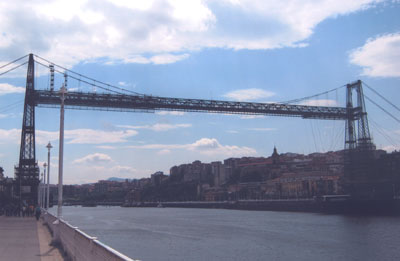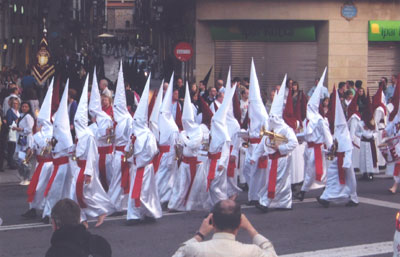Bilbao delights
Granted, the fabulous, Frank Gehry-designed Guggenheim Museum is a centerpiece of Bilbao, Spain, but the city has much more to offer.
My wife, Anne, and I were in Bilbao, April 19-21, 2011, and stayed at the NH Villa de Bilbao (Gran Via 87, 48011 Bilbao; phone +34 94 4416000, fax 4416529).
The hotel is a 10-minute bus ride ($1.80) from the airport yet within comfortable walking distance of both the new and old parts of the city. Our room cost $105 per night.
Bilbao has changed from an environmentally run-down industrial city to one of Europe’s most attractive cities. At the World Expo 2010 in Shanghai, China, the Bilbao city display chronicled the “three revolutions” the city has undergone: the Industrial Revolution, the Urban Revolution and the Future Knowledge Revolution.
We were able to see the display, which was on exhibit only through May, at the AlhóndigaBilbao (Plaza Arriquibar 4; phone 944 014 014), a multipurpose center 20 minutes’ walk from our hotel. (The center has sports facilities, art, film and music programs plus other events.)
We’ve seen many of architect Frank Gehry’s works in the US, but his design for the Bilbao Guggenheim, in open space along the Nervión River, is by far his most impressive. We toured it the same way we’ve toured the Guggenheim in New York, starting at the top floor and working our way down. We viewed the exhibitions taking place at the time with works of international artists. The museum also has a considerable selection of modern art.
As we were in the city during Semana Santa (Holy Week), processions were held every night in Old Town (a 30-minute walk from our hotel). Among the participants were Nazarenos wearing their traditional tunics and pointed hoods. Floats, including one of the Virgin Mary and Christ, were carried by scores of bearers. Processions were accompanied by the thunder of drums and occasional trumpets.
One surprise was finding the elevator — just behind St. Nicholas Church at the entrance to Old Town — that went to the upper part of town (fare, $1.30). When we stepped out of it, we were in a different world with a multitude of apartment buildings and a noticeably higher population density than in the lower part of town. We visited an old church, then found steps to walk back down to Old Town just in time to see another procession.
On another day we took the subway to the Vizcaya Bridge, which links the towns of Portugalete and Las Arenas, crossing the mouth of the Nervión River. This bridge, the world’s oldest transporter bridge (or aerial transfer bridge), was built in 1893 and declared a World Heritage Site by UNESCO in 2006.
It can be crossed by a gondola at street level (€0.30) or one can walk across it by paying a fare of €5, taking an elevator to the top of one of the towers (164 feet) and then proceeding to the other side. On top, there’s a superb view of the port of Bilbao and Abra Bay.
The subway system conveniently provides a line from both sides of the bridge back to the city.
JACK DINI
Livermore, CA


